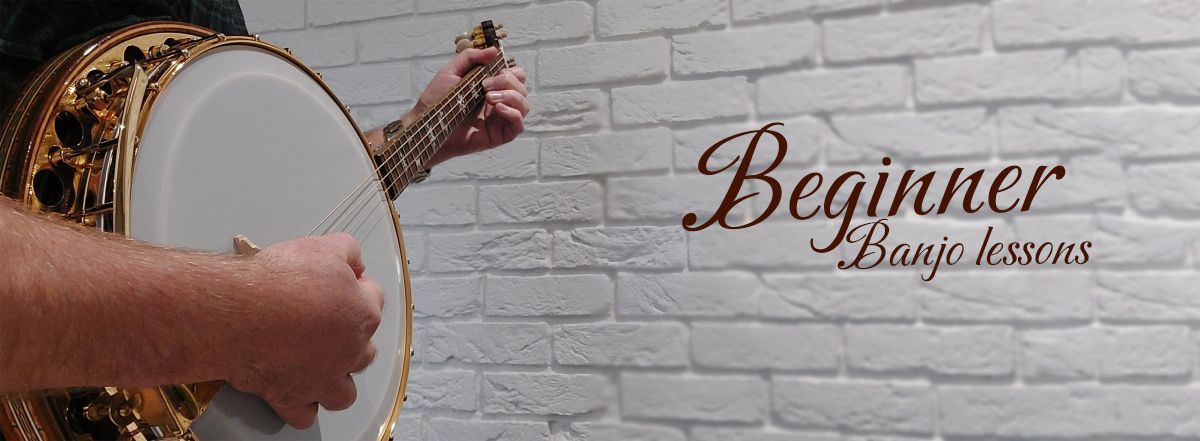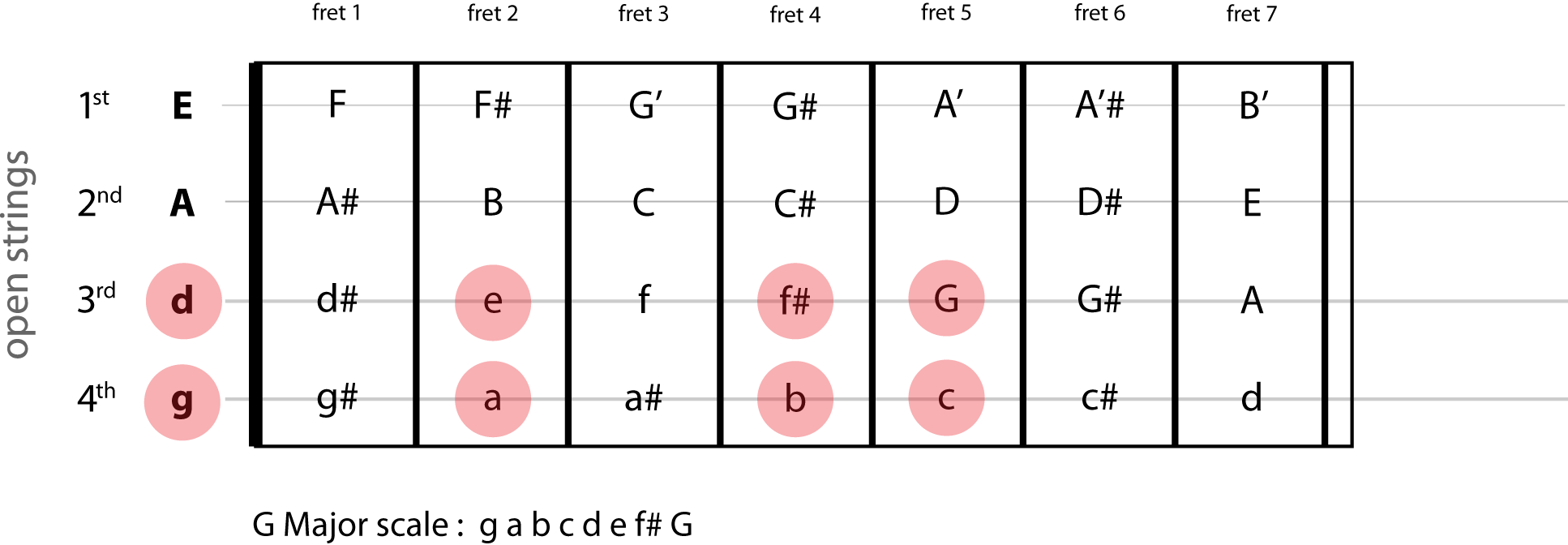
Playing the scale of D major
Practicing scales in the various keys is a great way of embedding muscle memory to your left hand position (notes) and also to your right hand position (plucking). Look at the diagram below to see how the notes are paired together starting from the open D string and finishing on the 5th fret or the 2nd string. This formation also applys to the lower scale of G Major and also the upper scale of A major.

Click on the videos below to watch the D major scale played on the tenor banjo (the second video shows you how to pluck the strings up and down as you progress through the scale)
Notes for practicing the climbing scale in the key of D major
Climbing…
d e f# d | e f# G e | f# G A f# | G A B G | A B C# A | B C# D B | C# D E C# | D
Descending…
E D C# E | D C# B D | C# B A C# | B A G B | A G f# A | G f# e G | f# e d f# | e
The 2nd video shows the pick grip and how I play up/down strokes very lightly and with a relaxed hand. Using the same notes on the D scale play along to this March ‘The Dawning of the Day’. The second video is played as an up tempo march.
Playing the scale of G major
Playing the low G major scale followed by the high G major scale. This will help position your right wrist behind the tail piece as an anchor point as you will be picking across 4 strings. The notes played from the 4th (bass) string are as follows: g a b c d e f# G this is called the lower G scale. The notes played on the high G major scale are as follows: G A B C D E F# G’
Note: The key of G major has only one sharp note namely F#

